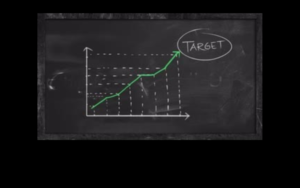Overall, you should keep your blood pressure and cholesterol at your target goals to prevent a heart attack. Most people know their target blood pressure goal, but are unaware of their target cholesterol level goals. As you probably know, the average person’s blood pressure target goal is less than 140/90 mm Hg. The target blood pressure goal for non-diabetic adults who are 50 years or older is less than 120/80 mm Hg. The rest of this post will focus on cholesterol.
Well, why should you care about your cholesterol and get it tested? After all, you need cholesterol to make all your important hormones that keep you alive. Like lowering blood pressure, when you lower your cholesterol, you can lower your risk of heart disease or at. About 1 out of every 3 people will have a heart attack around the time they retire. You don’t have to be the one if your implement these steps TO REDUCE YOUR CHOLESTEROL.
Step 1
What are the first steps to get to your best cholesterol level? There are some simple things you can do, and the first step is to know what your cholesterol level is. Testing is very important. See the previous post for more information on how often you should test your cholesterol if you take statins.
(https://hypertensionresistanttotreatment.com/what-you-must-know-if-you-take-a-statin/).
What is the best cholesterol testing? You have three major types cholesterol in your blood: low density lipoprotein (LDL), high-density lipoprotein (HDL), and very low-density protein (VLDL). Heart disease and coronary artery disease risks are based on elevated levels of these three lab values according to the old guideline.

However, the majority of cholesterol in your blood is carried in your LDL. This is why LDL is monitored closely to determine if you are more likely to develop heart disease in the 2018 guidelines. That said, LDL comes from the VLDL cholesterol. However, you can lower your VLDL by targeting your triglycerides.
Nevertheless, Apo levels and Lp-PLA2 are recommended instead of a lipid panel when you are high risk. Unfortunately, many insurances do not cover these tests and they are expensive. Check with your insurance for approval. A non-HDL level will let you know what your APO is based on a calculation if an APO is needed.

Step 2
The next step is to know what your cholesterol target goal is. Ask your health care provider what is the appropriate target goal for you. Use the list below to understand the cholesterol threshold for treatment for the average person according to the 2018 cholesterol guidelines. The 2013 guidelines lacked this important feature.
A VDRL is related to the amount of plaque in your arteries that would potentially cause a heart attack, cardiovascular disease or stroke. A high VDRL is greater than 30 mg/dl.
The best or optimal LDL is 70 mg/dl or less. A statin drug is suggested if your LDL is 70 or greater considering your risk. You may need additional medication if you are high risk. Get a TSH, T3, T4, and thyroid antibodies screening to rule out hypothyroid and determine if there is an hereditary cause which increase your risk of heart disease.
According to the new 2018 cholesterol guidelines, there are 9 high risk conditions:
– Age (65 and older)
– Heterozgous familial hypercholesterolemia
– History of prior coronary artery bypass surgery ofr PCI outside of teh major ASCVD EVENTS
– Diabetes Mellitus
– Hypertension
– Chronic Kidney Disease (GFR 15-59 ml/min/1.73 m2)
– Current smoking
– Persistently elevated LDL-C 100 mg/dl or greater despite maximum statin dose and ezetimibe
– History of congestive heart failure
High Density Lipoprotein (HDL)
Best or optimal level is greater than 60 mg/dl
Borderline Low is a level of 40-59 (not that good)
Not recommended is a level less than 40 (increased risk of cardiovascular disease and coronary disease)
Triglcerides (Tg)
Normal is less than 150 mg/dl
Borderline High is 150-199 mg/dl
High is 200-499 mg/dl
Very High 500 mg/dl or more
Step 3
The third step is to know your future risk of heart disease. Then, you need to reduce your cardiovascular risk to prevent a heart attack, coronary heart disease and stroke. While the first 2 steps are important, the most important step is to know what to do to get to your cholesterol goal and do it. A C-reactive protein level may give you the best understanding of the status of how much your risk has decreased, especially if you are at high risk.
You have an opportunity to do this without statins or other treatment because your health care provider will likely give you about 3 months to lower your cholesterol on your own based on the old 2013 guidelines. You may not get this 3-month opportunity if you are already at high cardiovascular risk. High cardiovascular risk would include coronary calcium score, elevated C-reactive protein. the elderly (55 years old OR OLDER), African American, a diagnosis of hypothyroidism, hypertension, metabolic syndrome or chronic renal disease.
Step 4
The 4th step is to know if OR when it is right for you to start drug treatment CONSIDERING OPTIONS, RISKS AND BENEFITS. The 2018 guidelines encourages providers to use a shared decision making approach when considering drug treatment.
Step 5
The last step is to help your provider decide the best treatment for you. In other words, you and your provider would decide the regimen together CONSIDERING OPTIONS, RISKS AND BENEFITS.
You can take small steps every week to reduce your cardiovascular risk to keep bad things from happening. Statins are effective life long medications if you cannot reduce your cholesterol with smoking cessation, low to no sugar and low to no carbohydrate diet. Statins lower LDLs and VLDL.
Bile acid binding resins lowers LDLs and are tolerated by diabetics without hyperglycemia. Fibrates are prescribed for diabetics to avoid hyperglycemia as well. Subscribe to Hypertension Resistant To Treatment for additional knowledge and resources to lower your cholesterol without statins in upcoming posts.
Summary
Controlling your blood pressure AND cholesterol will prevent cardiovascular disease. Do these 5 steps in addition to controlling your blood pressure before retirement. Then, maintain these habits to prevent cardiovascular diseases, heart attack, and stroke:
1) Know your cholesterol level
2) Know your cholesterol target goal
3) Know your future risk of heart disease
4) Know if or when it is right for you to start drug treatment CONSIDERING OPTIONS, RISKS AND BENEFITS (see documentaries about our standard American diet such as Forks OVER Knives)

5) Help your provider decide the best treatment for you
It is unfortunate that high cholesterol is caused by a food bone illness because it is challenging to consider a diet change. While acquiring the taste for a new diet may be the worst part, in my experience, adherence is the toughest. I recommend consulting a health coach for support.